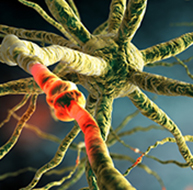Assessment Demonstration
Overview
We have discussed the assessment of the EEG from a variety of perspectives in other sections of Neurofeedback Tutor. This section will provide demonstrations providing examples of relatively simple and somewhat more complex approaches to EEG assessment. As noted previously, EEG assessment begins with a visual inspection of the EEG recording, using various montages (sensor comparisons) to identify the EEG's basic characteristics and determine whether there are abnormal patterns that warrant a referral for a neurological consultation. Following this inspection, a quantitative analysis may be desired, and this section will demonstrate some examples.
BCIA Blueprint Coverage
This unit covers VI. Patient/Client Assessment - D. Assessment Demonstration: Perform a basic EEG assessment, an abbreviated Q recording and/or attaching electrode cap and completing an abbreviated Q or 19-channel QEEG recording.

This unit covers abbreviated Q and 19-channel recordings.
ABBREVIATED Q RECORDINGS
NewQ
The first example is the NewQ, a 6 location assessment similar to a variety of other assessments that use a subset of the 19 scalp locations (10-20 system of electrode placement) to produce a somewhat limited but often helpful analysis of client findings.EEG assessments similar to the NewQ include New Mind Maps, The Learning Curve (TLC), the Clinical Q, and others. Some are designed for specific hardware/software platforms, and some can be used with multiple systems. As a class, they offer the clinician a degree of automation in collecting, processing, and interpreting EEG information that allows beginners and experienced practitioners alike to use expert systems that will ideally improve the assessment process. One commonality with these approaches is using a “Clinical Database” (Swingle P, 2014).
Swingle states that clinical databases are superior to normative databases because they are related to clinical findings and variations of results compared to known values such as the typical voltage of alpha activity in a particular region and associated with specific tasks. The development of a clinical database follows the developer's experience and allows other practitioners to benefit from that developer's years of education, training, and experience. The use of a clinical database does not result in a formal diagnosis like that seen in the Diagnostic and Statistical Manual of Mental Disorders-5 (DSM-5). Instead, the clinical database assessment suggests possible clinically relevant findings that may relate to the client’s symptoms.
For example, a lack of a typical increase in amplitude (voltage) of 8-12 Hz activity in occipital and parietal areas of the scalp may relate to a variety of symptoms such as anxiety, post-traumatic stress disorder (PTSD), perseveration, rumination, hypervigilance or other findings and may be associated with difficulty sleeping, difficulty with self-calming, physiological exhaustion and other issues. Once the clinician has this information, they can decide what training protocol may be most helpful for that client. The assessment can also be repeated quite easily to track progress and identify additional training approaches.
The following video describes the NewQ as an example of such an assessment. Following that explanation, a demonstration of collecting the data, processing the data, and interpreting the findings is included. Video © J. S. Anderson.
